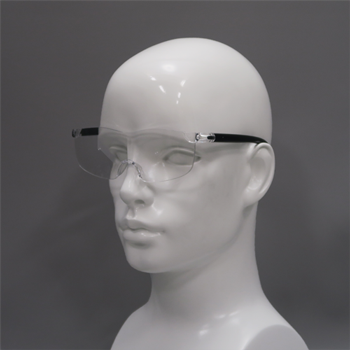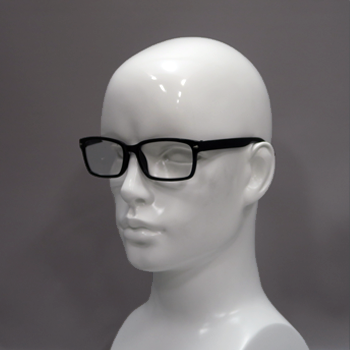Dangerous to walk with wearable magnifying glasses: they are different from eyeglasses
Injury cases
My father in his 80s walked with wearable magnifying glasses and fell down. He broke his ribs.
(reported by a woman in her 60s)
When using wearable magnifying glasses, I felt discomfort and irritation in my eyes.
(experienced by a man in his 60s)
Problems and Advice
Wearable magnifying glasses are used to enlarge images of objects within arm's reach, not to correct vision problems such as presbyopia. PIO-NET1 has received 419 inquiries and complaints about wearable magnifying glasses2 (e.g. "Images were not enlarged to the magnification indicated," "I felt dizzy during use," etc.), 90 percent of which were from people aged 60 or older. Some of them got injured when wearing magnifying glasses. Therefore, NCAC examined features of how objects are seen through wearable magnifying glasses.
Appearance of wearable magnifying glasses
Photo 1: Single undivided lens type

Photo 2: Two lens type

- 1 PIO-NET is a database that collects information on inquiries concerning consumer affairs by linking NCAC with local consumer affairs centers and similar organizations across Japan via an online network.
- 2 Data registered from April 2015 through the end of October 2020. The inquiries were sorted out and counted for this article.
It's dangerous to walk with wearable magnifying glasses, because they are not for correcting vision problems such as presbyopia
The focal length (distance from the optical center3 of the lens to the imaging point) of the tested products was between 25 cm and 51 cm, within arm's reach. It was not possible to clearly see things beyond the focal length. Images through magnifying glasses are different from those through eyeglasses, so people may fall down when walking with wearable magnifying glasses.
- 3 The optical center is the point in a lens through which light rays pass without refraction.
Images are not enlarged as magnification indicated
Some consumers reported that images were not enlarged to the magnification indicated when wearing wearable magnifying glasses. NCAC examined vision with and without wearable magnifying glasses. When seeing an object from a distance equal to the focal length, images were not enlarged to the magnification indicated. The examinee had to get closer to the object to enlarge an image thereof to the magnification indicated.
Possibility of eyestrain
When the optical center distance (distance between the optical centers of the left and right lenses) does not correspond with the interpupillary distance (distance between the centers of the pupils of the eyes), users may suffer from eyestrain, headache, dizziness, etc.
Ready-made magnifying glasses are not always suitable for everyone. Try on before buying. If you use eyeglasses, try wearing both eyeglasses and wearable magnifying glasses at once.
In case of abnormality in your eyes or vision, consult an ophthalmologist.
Reference:
- "Vision through wearable magnifying glasses - they are not for correcting vision problems such as presbyopia" released by NCAC on February 4, 2021(Japanese version)
